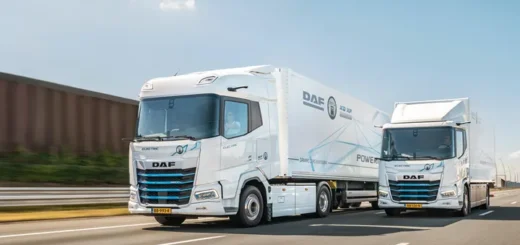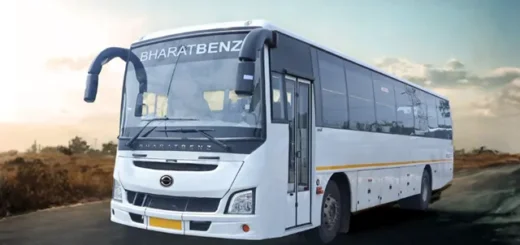Cyrus Mistry Road Accident: Rear seatbelts, lack of scientific data | Key takeaways
There is a need for scientific, evidence-based data to address road safety in India, with a policy approach that considers road accidents as a ‘collective’ phenomenon involving myriad factors.

The tragic car accident involving industrialist and former Tata Sons executive Cyrus P. Mistry has shocked the entire nation, primarily out of yet another realization that accidents show no mercy to any road users, irrespective of their personality or economic status. The media attention that this accident garners is also out of victim’s high profile nature. Because, otherwise, road accidents are a common phenomenon, and we hardly pay attention to the details. Victims are merely seen as some numbers that neither have any value nor learnings for the future.
For the past couple of days, social media platforms, especially WhatsApp groups, are flooded with posts on the car crash. People find every avenues to share wreckage photos, write-ups on the importance of seatbelts and responsible driving behaviour, forwards on road safety aspects, and so on. Any discussion and dialogue in this regard is a positive step in creating awareness, no doubt. But then, its efficacy lies in critically considering what is being said, and imbibing them into our everyday driving practices.
Rear seatbelts in spotlight
The accident has kindled a public discussion on the importance of seatbelts for rear seat passengers in cars. It is reported that Mistry and his co-passenger in the rear seat were not wearing seatbelts. It is likely to the case, given that the crash vehicle appears to have brunt no substantial damage to the body shell and side doors. This means that the victims could have collided with internal objects of the car, although a detailed investigation will shed more light on the actual cause of their deaths.
The 2017 Mercedes-Benz GLC 220d 4MATIC that Mistry and his friends were travelling is equipped with side curtain airbags for the rear passengers. The airbags seem to have deployed as intended, clear from the images of the wreckage shared in social media. Yet, the airbags could not save the passengers as they are just a ‘Supplementary Restraint System’ (SRS) that augments the primary restraint provided by seatbelts.
Time and again, we have to make people aware of the fact that only a combined deployment of seatbelts and airbags can save lives at the time of a crash. Modern cars are also equipped with seatbelt pretensioners that sense the sudden pull forces to tension the belts adequate enough for the seated passenger to hit the airbags safely.
Also Read: Road safety starts at home: Let’s start with seatbelts
There is a lacunae in enforcement of seatbelt rules for driver and passengers in India that needs to be acknowledged. The amended Motor Vehicle Act 2019 requires all the occupants of cars to wear seatbelts, including the rear seat passengers. Many are of the impression that the seatbelt rule is applicable only for the front seats. Even cars have seatbelt warning systems only for the driver and front passenger seats, which adds to their ignorance.
Further, this crash episode also strengthens the argument the mere loading of cars with additional airbags – a passive safety system – cannot guarantee zero fatalities. Instead, active safety equipment such as autonomous emergency braking, warning systems for possible collision and unwarranted lane change, and other ADAS (Advanced Driver Assist Systems) features can elevate the safety rating of vehicles in India.
Need for evidence-based accident data
Yet another important takeaway from this crash is our general tendency to blame victims by putting the onus on the driver or passengers for their fate. I came across several WhatsApp posts underscoring the fact that the driver in this crash was a woman, in a way reinforcing the stereotypical notion that women are typically inferior to men in terms of driving skills.
Such reports also jump to a conclusion that the driver of the car was over-speeding and lost control of the vehicle, outrightly negating all other possibilities and factors that may have also played a role. For instance, to prove that the vehicle was speeding beyond limits, authorities are citing circumstantial evidence from the CCTV recording of a check post 20 kilometres before the crash site, by making an inference that the car covered the in-between distance in a quick span.
This takes us to the point that post-crash investigations often resort to circumstantial inferences and simplistic methods to determine driver’s fault, thereby ignoring several other factors contributing to the accidents. India often lacks detailed and scientific investigation of the accidents, especially on national highways that constitute just 2 percent of total roads but accounting for 36 percent of road accidents as per NCRB’s findings.
It is unjustifiable to attribute such a huge chunk of accidents (56 percent in 2021, according to NCRB) to high-speed driving behaviour without adequate scientific data to support the claim. In other words, we need to look beyond the common factors, and pay attention to certain composite aspects such as poor road design and maintenance of infrastructure – not just roads but also other essential services including highway patrol and medical assistance teams – including traffic management in fixing responsibility for road accidents.
It doesn’t mean that drivers and passengers can be hooked-off from their individual responsibilities. The argument here is to consider road accidents not as an individualistic event but as a collective phenomenon involving a plethora of factors beyond the drivers’ behaviour.
Also Read: Why are the Third Row seats of SUV/ MPVs totally unsafe?









